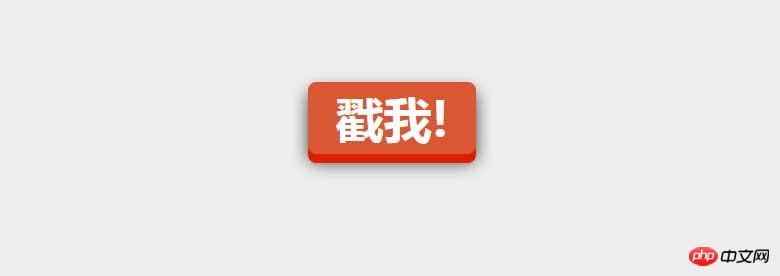Heim >Web-Frontend >CSS-Tutorial >Beispiel für die Implementierung eines 3D-Schaltflächeneffekts mit CSS
Beispiel für die Implementierung eines 3D-Schaltflächeneffekts mit CSS
- 高洛峰Original
- 2017-02-25 14:41:402017Durchsuche
Heute werde ich einen 3D-Button teilen, der mit reinem CSS implementiert wurde.
CSS nutzt geschickt Box-Shadow, um den dreidimensionalen Effekt von 3D-Objekten zu erzielen. Wenn die Taste gedrückt wird, werden die Box-Shadow- und Top-Werte geändert.
Es fühlt sich an, als würde ein Knopf gedrückt. Der CSS-Code ist sehr klein, wie unten gezeigt
a.css-3d-btn{
position: relative;
color: rgba(255, 255, 255, 1);
text-decoration: none;
background-color: rgba(219, 87, 51, 1);
font-family: "Microsoft YaHei", 微软雅黑, 宋体;
font-weight: 700;
font-size: 3em;
display: block;
padding: 4px;
border-radius: 8px;
/* let's use box shadows to make the button look more 3-dimensional */
box-shadow: 0px 9px 0px rgba(219, 31, 5, 1), 0px 9px 25px rgba(0, 0, 0, .7);
margin: 100px auto;
width: 160px;
text-align: center;
-webkit-transition: all .1s ease;
-moz-transition: all .1s ease;
transition: all .1s ease;
}
/* now if we make the box shadows smaller when the button is clicked, it'll look like the button has been "pushed" */
a.css-3d-btn:active{
box-shadow: 0px 3px 0px rgba(219, 31, 5, 1), 0px 3px 6px rgba(0, 0, 0, .9);
position: relative;
top: 6px;
}
Der Effekt ist wie folgt:

Das Obige ist der gesamte Inhalt dieses Artikels. Ich hoffe, dass er zum Lernen aller beiträgt. Ich hoffe auch, dass jeder die PHP-Chinesisch-Website unterstützt.
Weitere Artikel zur CSS-Implementierung von 3D-Schaltflächeneffekten finden Sie auf der chinesischen PHP-Website!
In Verbindung stehende Artikel
Mehr sehen- CSS-Float-Layoutprozess und das klischeehafte dreispaltige Layout
- Detaillierte Erläuterung von CSS3+jQuery zur Implementierung eines kreisförmigen Fortschrittsbalkens
- So legen Sie die Schriftfarbe für CSS-Texte fest
- Wie verwende ich CSS, um ein anderes Bild abzudecken, wenn die Maus hinein- und herausbewegt wird? (Beispiel)
- Was ist CSS danach?

